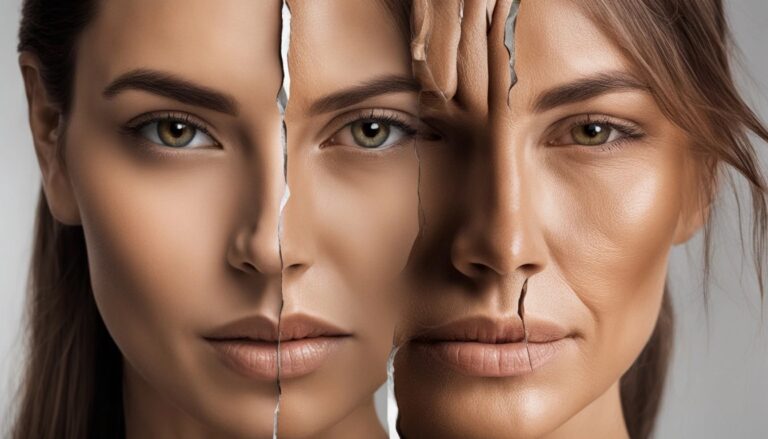Rethinking Clean Beauty: Why Purity is More Than a Trend
The beauty industry is no stranger to trends, but one movement that’s really taken off is the shift toward clean beauty. The term “clean” has become synonymous with natural, safe and non-toxic products, but as with any buzzword, the true meaning can sometimes get lost. Beyond the promise of organic ingredients and eco-friendly packaging, clean beauty is about more than what’s left out. It’s about transparency, sustainability, and creating a connection with the products you use. But how do we go beyond the surface to understand what clean beauty really means?
[ruby_related heading=”More Read” total=3 layout=1 offset=5]
The human connection to clean beauty
Why do people choose to use clean beauty products? For some, it’s about health. They’re concerned about the long-term effects of synthetic chemicals found in mainstream beauty products. For others, it’s the environment, driven by a desire to reduce their carbon footprint and minimize waste. Then there are those with sensitive skin or allergies who find that clean beauty offers gentler alternatives.
But perhaps one of the most important reasons people are drawn to clean beauty is the emotional comfort it brings. In a world full of unknowns, there’s something comforting about knowing exactly what’s in your beauty products. You don’t just trust the brand, you trust that the product aligns with your values.
Take Sarah, for example. After experiencing chronic skin irritation, she switched to clean beauty products made with simple, non-irritating ingredients. Not only did her skin improve, but so did her peace of mind. Every time she applied her favorite serum, she knew she was nourishing her skin without any hidden risks. For Sarah, clean beauty wasn’t just a change in products; it was a change in how she felt about her skincare routine.
Myths vs. Facts: Debunking Common Misconceptions
Despite its growing popularity, clean beauty comes with its share of misconceptions. One of the biggest myths? “All natural ingredients are safe. In reality, natural doesn’t always mean better. Poison ivy is natural, but you probably don’t want it in your moisturizer. Clean beauty isn’t about sticking to 100% natural ingredients; it’s about using ingredients that are safe and non-toxic, whether they’re derived from nature or synthesized in a lab.
Another common misconception is that clean beauty products are always more effective. While it’s true that many clean products can be gentler on the skin, effectiveness varies depending on individual needs. Some people find that certain synthetic ingredients work better for them than natural ones. The key is to look for transparency. Clean beauty brands are upfront about what’s in their products and why those ingredients were chosen.
Finally, there’s the idea that clean beauty is just a marketing ploy. It’s true that some brands are taking advantage of the trend by using vague terms like “natural” or “green” without any real substance behind them. But that doesn’t mean the entire movement is without merit. Educated consumers can navigate these waters by researching the brands they support and learning to read labels critically.
Hidden benefits of clean beauty you didn’t expect
The obvious benefits of clean beauty-fewer chemicals, healthier skin-are well known. But there’s another side to clean beauty that often goes unnoticed: its impact on mental and emotional well-being. Taking the time to carefully select products that align with your values fosters mindfulness in your routine. It’s not just about applying a face mask or using a new cleanser; it’s about the ritual of self-care, the act of doing something kind for yourself.
Many clean beauty brands also emphasize ethical practices. From cruelty-free testing to fair-trade ingredients, the clean beauty movement is often tied to values that go far beyond personal health. When you buy from brands that prioritize these values, you’re contributing to something bigger than just skin care.
There’s also the sustainability angle. Clean beauty often intersects with eco-consciousness, with many brands focusing on sustainable sourcing, biodegradable packaging and reducing carbon footprints. Consumers who embrace clean beauty often find that it sparks an interest in living a greener lifestyle, from recycling to reducing plastic waste.
A personalized approach to your clean beauty journey
One of the biggest mistakes people make when transitioning to clean beauty is assuming it’s a one-size-fits-all solution. The truth is, everyone’s skin is different, and so are their priorities. Some may be more concerned with avoiding parabens, while others are focused on reducing waste. The beauty of clean beauty is that you can tailor your routine to your unique needs and values.
Start by identifying what is most important to you. Is it avoiding certain chemicals? Reducing your environmental impact? Support cruelty-free brands? Once you know your priorities, finding products becomes much easier.
When shopping for clean beauty, it’s important to read labels carefully. Don’t rely on terms like “natural” or “green,” which can be misleading. Instead, look for transparency brands that disclose all ingredients and explain their purpose. If you’re unsure about a product, look for third-party certifications, such as USDA Organic or Leaping Bunny, to make sure it meets specific standards for cleanliness.
Challenges of Clean Beauty: It’s Not All Roses
As wonderful as clean beauty sounds, it’s not without its challenges. For one thing, clean products tend to be more expensive than their conventional counterparts. The reason? Higher-quality ingredients often come at a higher price, and sustainable practices can drive up costs. But that doesn’t mean clean beauty is out of reach. Many brands offer affordable options, and you can always opt for DIY recipes using simple ingredients like coconut oil, honey, or oats.
Another challenge is the issue of greenwashing – when companies falsely market their products as “clean” or “green” without actually adhering to the principles. It’s important to be vigilant and do your research before trusting a brand’s claims.
After all, clean beauty products can sometimes be harder to find, especially if you live in a rural area or don’t have access to specialty stores. However, the rise of e-commerce has made it easier than ever to find clean beauty brands online, and many offer detailed ingredient lists and consumer reviews to help guide your choices.
The bottom line: The Future of Clean Beauty is in Your Hands
Clean beauty isn’t about perfection. It’s about progress, making conscious choices that align with your values and reflect your commitment to your health and the planet. The beauty industry is evolving, but the future of clean beauty depends on informed, thoughtful consumers. Every purchase you make is a vote for the kind of industry you want to see.
As you embark on your clean beauty journey, remember that it’s not about finding a single miracle product. It’s about creating a routine that feels right for you-one that prioritizes your well-being, supports ethical practices, and embraces the importance of sustainability. So take it one step at a time. Your clean beauty journey is uniquely yours, and every choice you make brings you closer to a healthier, more mindful future.






